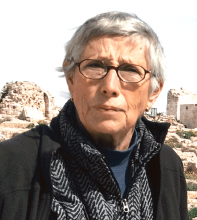You are here
Succour for Syrians
Dec 10,2014 - Last updated at Dec 10,2014
On Tuesday, UNHCR convened a gathering in Geneva with the aim of pressing wealthy countries to provide $7.2 billion in financial assistance for Syrian refugees and to offer asylum or resettlement for 130,000 of the 3.2 million registered refugees now living in Jordan, Lebanon, Turkey, Iraq and Egypt. The world’s richest countries are failing to meet both obligations.
UNHCR received initial pledges of $500.8 million for 2015 during the conference, $170 million less than for this year. The UN Refugee Agency’s 2015 budget is for $6.23 billion to meet the needs of 43 million refugees, displaced and stateless people, the largest group being Syrians. To date UNHCR has received only $3.19 billion, less than half the sum required.
Last week the World Food Programme suspended vouchers which provide basic foodstuffs to 1.7 million of the neediest refugees, forcing donors that did not deliver earlier to provide $80 million, enough for December only.
During the conference, the 28 countries of the European Union agreed to accept 66,254 Syrian refugees, raising the total number of resettlement places to more than 100,000. Eleven other countries said they are considering their options.
There seems to be confusion over the number of refugees the US and Canada are prepared to resettle. One report holds that they have accepted 5,350 refugees and are prepared to raise the number to around 9,000. Another, report reveals that the US has permitted the entry of just 91 and Canada around 200.
The 100,000 figure is one-third below the 130,000 UNHCR had proposed.
Succour for Syrians is an obligation because several governments of rich states are also deeply involved in the Syrian civil war and must be held responsible for the fate of Syrians displaced by the conflict.
Last spring, Syrian Arab Red Crescent operations chief Khaled Erksoussi told this correspondent that countries which provide millions of dollars worth of arms and funds for the combatants should also be required to donate similar sums for relief for victims of the conflict. Ahead of the Geneva conference, 36 international human rights and aid organisations urged wealthy countries to offer both funds and sanctuary to Syrian refugees. Of those registered with the UN, 95 per cent are in the five countries which have received the influx.
By the end of 2015, the organisations involved in the appeal — including Amnesty International, Oxfam, Islamic Relief, Save the Children and ActionAid — propose that countries other than the five hosts should admit only 180,000 Syrians, which amounts to 5 per cent of the 3.8 million refugees. Five per cent! This is in itself a shameful figure as by the time the 5 per cent are resettled more refugees will have entered the five host countries, defying restrictions by crossing borders illegally along smuggling routes.
UN registered Syrian refugees account for 26.3 per cent of the population of Lebanon, 9.8 per cent of the population of Jordan, 2.14 per cent of the Turkish population, 0.67 per cent of the population of Iraq, and 0.17 per cent of the population of Egypt. These figures show that Lebanon, the most dramatically affected by the influx, is most in need of financial and humanitarian aid and relief through the migration of refugees.
Neediness is not confined to Syrians who fled their country. In addition to the refugees, there are 6.45 million people displaced inside Syria, half being children. A total of 10.8 million inside Syria are in need of humanitarian aid, including 200,000 living in besieged areas. There is a shortage of funds for this aid programme as well.
UNHCR has been pragmatic in its demand for resettlement places. On one hand, Europe and the Americas, the preferences of the refugees, are also facing influxes of migrants other than Syrians. On the other hand, the vast majority of Syrian refugees simply want to return to Syria, to their villages, towns and cities, and their homes, if they still stand.
A report, titled “Hungry for Peace”, issued this week by the Madani organisation, in collaboration with the London School of Economics (LSE), provides some hope that thousands of the millions of refugees may, in fact, be able to go home. The author of the report, Dr Rim Turkmani, an LSE research fellow, points out: “While global efforts to pursue a political solution are rapidly being de-prioritised, Syrians are pushing for periods of calm by brokering local [ceasefire] deals. In some cases these have stopped the fighting and opened up the flow of aid; other deals succeeded in restoring water and electricity services to a large area. Even when negotiations fail, they reflect a strong local potential and desire for stability that remians untapped.”
Her advocacy of local ceasefires dovetails with that of a plan put forward by UN mediator Steffan de Mistura, who following a visit to Damascus, said that local truces could end fighting between rebel and government forces, permitting them to concentrate their efforts on tackling the Islamic State in Iraq and Syria (ISIS). Such an arrangement could put enough boots-on-the-ground in Syria to roll-back ISIS with the aid of US-led air raids against ISIS fighters, vehicles and positions.
De Mistura has suggested a truce in Aleppo where the army has rebel elements besieged in one area. President Bashar Assad has responded positively to the plan if rebel groups agree. Both sides also have to maintain the status quo on the ground.
Once local truces are in place, refugees and displaced persons can begin to go home. They would, of course, need large amounts of financial aid to repair and rebuild their homes, businesses and farms, and cover living expenses until they can earn again. The parties in charge of pacified areas would also have to guarantee the safety of returnees and the UN would have to deploy monitors to ensure that they are not abused or detained and can regain their property.












